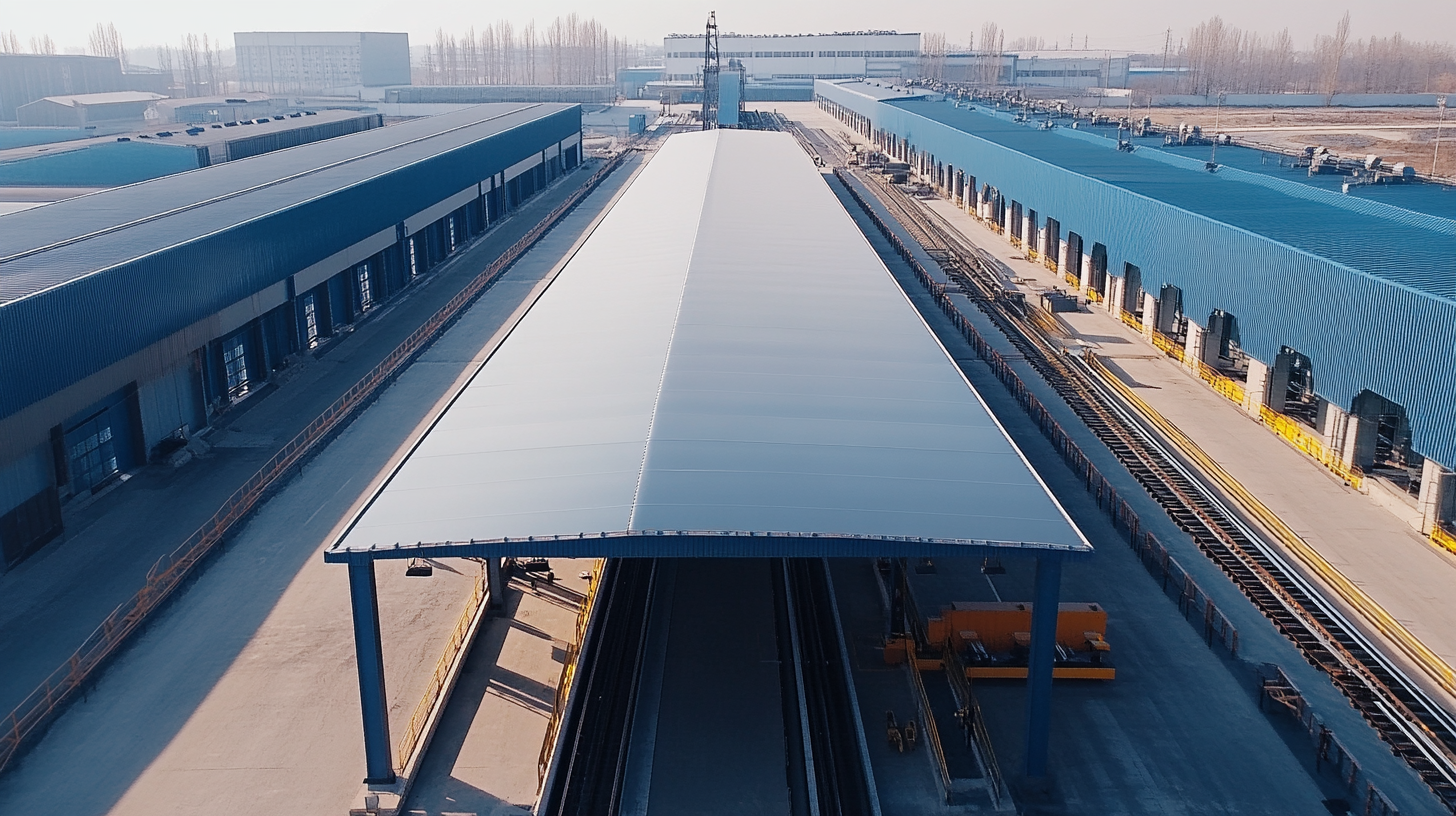Inquiry
Form loading...
- Phone
- E-mail
In today's global market, the demand for high-quality materials is more pressing than ever. Among these materials, HDPE sheets have emerged as a reliable choice for various industries, ranging from construction to packaging. As businesses increasingly recognize the importance of durability and performance, China has positioned itself as a leading supplier of HDPE sheets that deliver consistent quality. With advanced manufacturing processes and stringent quality control measures, Chinese manufacturers have become synonymous with dependability in the supply chain. This blog will explore the key attributes of HDPE sheets produced in China, emphasizing how they meet the diverse needs of customers worldwide while ensuring exceptional performance and longevity. As we delve deeper, it will become evident that choosing the right partner in the global marketplace is essential for those seeking superior HDPE sheets that stand the test of time.

In the global market, the quality of HDPE sheets is crucial for establishing and maintaining reliable partnerships. High-density polyethylene (HDPE) sheets, recognized for their durability and versatility, are increasingly being used across various industries, from packaging to construction. According to industry reports, the global HDPE sheet market is projected to experience significant growth, passing USD 6 billion by 2025. This growth is driven by the rising demand for sustainable solutions and high-performance materials.
The importance of quality in HDPE sheets cannot be overstated, particularly in light of growing regulations concerning recycled plastics. Recent studies indicate that over 30% of plastic waste can be transformed into high-quality HDPE sheets through advanced recycling technologies. This not only aids in reducing environmental impact but also ensures that products maintain a high standard of performance. Businesses must prioritize sourcing HDPE sheets that meet stringent quality criteria to ensure long-lasting applications and compliance with international regulations, thereby cementing their global partnerships.
Investors and manufacturers alike need to focus on the quality aspect of HDPE sheets as a fundamental component of their supply chain. As the industry shifts toward sustainability, maintaining high-quality standards while integrating recycled materials will be key to thriving in the competitive global marketplace.
In recent years, the demand for high-density polyethylene (HDPE) sheets has surged, driven by their versatility and superior performance across various applications. Understanding the manufacturing process of these sheets in China reveals a sophisticated approach that emphasizes quality and efficiency. The journey begins with sourcing virgin or recycled plastic materials, where stringent quality control measures ensure that only the best raw materials are utilized. This initial step is crucial as it directly influences the final product's strength and durability.
Following material selection, the production process involves advanced techniques such as extrusion and molding. These methods not only expedite the creation of HDPE sheets but also allow for the customization of thickness, color, and other properties to meet specific consumer needs. When it comes to recycled plastics, the process becomes even more beneficial for the environment. By transforming waste plastic into high-quality HDPE sheets, manufacturers play a pivotal role in reducing plastic waste and supporting sustainability efforts. Innovations in this area, particularly in research and development within institutions like the United Arab Emirates University, are paving the way for advancements in recycled thermoplastics, bolstering global sustainability initiatives further.
When considering HDPE sheets for various applications, choosing a reliable supplier can significantly impact the quality and performance of the end product. Chinese manufacturers have gained a solid reputation for providing high-quality HDPE sheets that meet the needs of multiple industries. One key advantage of opting for Chinese HDPE sheets is their consistent quality, supported by robust manufacturing processes and advanced technology that adhere to international standards.
Moreover, with the recent expansion of petrochemical capacities in China, particularly the launch of new production units, there is a positive outlook for enhanced material availability and competitiveness in pricing. This development allows for increased efficiency in production and a steady supply chain, ensuring that businesses relying on HDPE sheets can access the materials they need without interruption. The combination of quality and reliability makes Chinese HDPE sheets an excellent choice for industries ranging from construction to packaging, as companies can trust in their performance and durability for various applications.

In the highly competitive world of HDPE sheets, ensuring consistent performance is paramount. Chinese manufacturers have established rigorous quality control measures that are integral to production. According to a report by MarketsandMarkets, the demand for HDPE in various applications, including packaging and construction, is projected to reach 38.15 million tons by 2027, underscoring the importance of reliable quality. Chinese factories implement advanced technology, such as automated inspections and real-time monitoring systems, to maintain high standards in material production. This not only reduces defects but also enhances the durability and performance of the HDPE sheets.
**Tip:** When selecting HDPE sheets for your projects, look for certifications like ISO 9001, which indicate adherence to international quality management standards. Such certifications often correlate with improved reliability and performance.
Moreover, the focus on sustainability has also played a crucial role in enhancing product quality. Chinese manufacturers are increasingly adopting eco-friendly practices, including recycling and waste reduction. A study from the Plastic Industry Association highlights that approximately 30% of HDPE produced globally is now derived from recycled sources, emphasizing the industry's shift towards sustainable development. This commitment not only boosts the overall quality of the product but also meets the growing consumer demand for environmentally responsible solutions.
**Tip:** Always inquire about the source of materials used in the HDPE sheets to ensure they align with sustainability practices, as this can impact both performance and environmental impact.
This pie chart illustrates the distribution of various quality control measures employed in the production of HDPE sheets in China. Material quality is emphasized the most, followed by process monitoring and testing procedures, highlighting the commitment to ensuring consistent quality and performance.
HDPE sheets are increasingly recognized for their reliability and performance in various industries, playing a pivotal role in enhancing business operations. From construction to manufacturing, these high-density polyethylene sheets offer exceptional resistance to chemical, weather, and impact, making them suitable for numerous applications. According to a recent market analysis, the global HDPE market is projected to reach over $92 billion by 2027, growing at a CAGR of 5.6%. This growth is driven by the rising demand for robust and durable materials that can withstand harsh environments, particularly in the context of evolving technological landscapes.
As sectors such as telecommunications expand with the rollout of 5G and the growth of cloud computing services, the need for quality materials like HDPE sheets becomes even more critical. Telecommunications operators are increasingly investing in infrastructure that requires dependable and versatile solutions. Reports indicate that cloud computing revenue for telecom operators is projected to grow by more than 25%, with HDPE sheets being leveraged for applications ranging from protective casing for telecom equipment to structural components in smart home technologies. This trend highlights how HDPE sheets not only support industry innovation but also directly impact the efficiency and effectiveness of business operations across the board.

